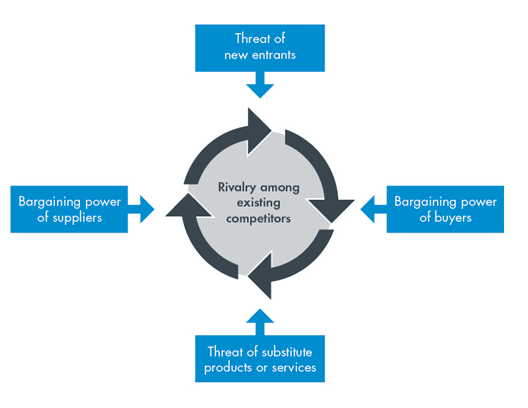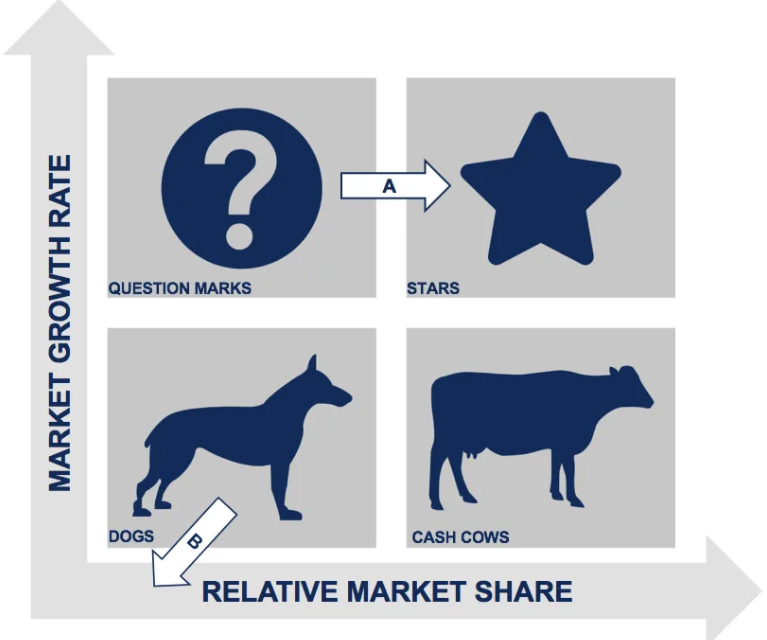Introduction
IMG is a sports organization driven by the mission of focusing on fan-first engagement through the delivery of digital content and product innovations that fuel emotions and excitement unique to the world-class sport. The firm was established in 1978 pioneered by Nick Bollettieri Tennis Academy (IMG Academy, 2021). The paper provides an analysis of the mission statement, industry, and competitive evaluation using the Porter’s Five Forces analysis, and describes the market share using the BCG matrix.
Mission Statement
The IMG mission statement is “to ensure all people are destined to succeed by enabling them to rise up to their full potential” (IMG Academy, 2021). The organization ensures that all people are represented and have a chance to exercise their talents. The firm also employs various ways to represent the voices of all the groups. In my opinion, the mission statement does not need any modification because it aligns with the core values and their commitments. However, it should focus on improving the physical fitness even for people with physical disabilities.
Porter’s Five Forces of Competitive Analysis
According to Bruijl (2018), the forces include existing competitors, new competitors, substitutes, bargaining power of suppliers, and bargaining power of customers, as shown in Figure 1.

Existing Competitors
Evaluating the existing competitors is a key aspect in analyzing competitiveness within an industry (Mind Tools, n.d.). IMG as a sporting organization, competes with other firms. This also exposes the firm to compete for other things, including sponsorships, talent searching, managers, and more fans. Its close competitors include Octagon, CAA, and ExcelSports. This environment itself has set standards as high performance dictates the gain of advantage over the competitors. To arrive at this, the CEO of the IMG ought to strengths from which to make decisions. This involves either choosing from building on own strengths or stay focusing on the competitors’ weakness.
New Entrants’ Threat
Evaluating the sporting industry through competitive analysis is vital to analyze the entrance of new competitors into the industry. For example, IMG, being a top-performing organization through its strong base of investors and fans, may face strong competition from other organizations that may attract stronger investors and change leadership structures and tactics. This, therefore, may lead to strong competition within the industry. Thus, the IMG organization will need to be prepared for the new entrance of competitors and keep revolving around the surroundings to be updated. This will make it invest in new opportunities in the industry.
Threat of Substitutes
Substitutes remain to be part of the evaluation process of competitive analysis. From time to time, the sporting industry has experienced several changes and industrial growth. This has attracted the development of several substitute products within the sporting industry that has remained competing for the same audience. IMG being a professional sports management organization, may face substitute competition as the people may switch away from one sport to another, leading to a decrease in revenues. IMG should perform constant market research to ensure they are aware of the possible substitutes from their rivals.
Bargaining Power of Suppliers
In evaluation of the competitive nature of the industry the power of suppliers is considered. For example, IMG may experience significant supplier bargaining power from the suppliers’ point of view. The stronger the organization becomes and attractiveness, the more it has more bargaining power over suppliers. On the other hand, if it remains less attractive and less performing, it may give the suppliers more bargaining power over IMG. This thereby defines how it is easy for suppliers to decide and drive on prices. Therefore, this depends on the number of suppliers within the industry, the services, and products they offer, which may be different, and the cost that one may incur if they may want to change suppliers to others.
Bargaining Power of Customers
Buyers have a considerable impact on deciding or driving down prices (Mind Tools, n.d.). This is determined by the number of buyers within the market, how the organization treats the buyers, and the cost incurred if a buyer decides to switch to another supplier. IMG being a professional sports management organization, can experience customer bargaining power when it has few powerful buyers who dictate terms; thus, they rule over what to be done. To maintain high profits, IMG should focus on capturing a large market through marketing strategies like advertising.
BCG Matrix
IMG is a sports management organization seeking to offer sports services and products. For betterment in decision making, IMG should focus on utilizing the use of the BCG matrix. BCG matrix is a tool used in assessing an organization’s position in terms of its product range. This matrix will enable the organization to visualize and organize business services that may help arrive at the best options for investment. According to Mohajan (2017), four parts are involved, namely, question marks, dogs, stars, and cows, as shown in Figure 2. In a simple form, it is based on helping to think about the products and services and make decisions about which investments to choose and keep, and which should be discarded basing on growth and market share.

BCG Matrix Describing the Market Share
The cash cows in the matrix represent the products and services in the market for some time and generate income (Mohajan, 2017). Considering the IMG firm, it should focus on building and investing in services and products that have been existence and have reached the maturity stage of the product lifecycle. At this stage, the product is considered a cash cow as it can be said to have a high market share, margin, and limited growth or decrease.
At this level, there are low costs incurred and optimizing on profits. Such investments are the advertising services and products that sports organizations are mostly involved in and have proven to make continuous revenues and incur less cost. The stars in the BCG matrix are the products that are at the start of the product lifecycle (Mohajan, 2017). These products are experiencing growth, and market share is high. IMG should also consider investing in these investments as they promise high returns by focusing on product development. Such an investment in the IMG organization is the virtual gaming that is garnering fame and popularity.
The dogs in the BCG matrix are the products that are at the end of their lifecycle and end up competing against the rivals. These products and services have low market shares and margins (Mohajan, 2017). Additionally, in this segment, products and services experience low growth and even a shrinking growth rate. IMG can discard the projects that pose to be on experiencing such lifecycles and segments. Question marks on the BCG matrix represent the products whose future is not certain. Their market growth is high, but their market share is low (Mohajan, 2017). A firm has the choice to create a star situation by promoting the product through investing in marketing. IMG has the mandate to invest in marketing strategies to increase the market share of the product.
Conclusion
Conclusively, organizations in different industries need to analyze competitive forces’ assessment analysis to determine their marketing shares and margin. Firms need to develop their mission statements to create a leadership structure that is a downward leadership model, thus, providing guidelines for the entire organization. These organizations use their mission statements, thus defining their goals and visions. These objectives and vision are arrived at by evaluating the competitive analysis of the industry by using Porter’s five forces of competition and the BCG matrix of the product segment.
References
- Bruijl, G. H. T. (2018). The relevance of Porter’s five forces in today’s innovative and changing business environment. Web.
- CGMA. (2013). Porter’s Five Forces of Competitive Position Analysis. Web.
- Corporate Finance Institute (n.d.). What is the Boston Consulting Group (BCG) Matrix?. Web.
- IMG Academy. (2021). About IMG Academy. Web.
- Mind Tools. (n.d.). Porter’s Five Forces: Understanding Competitive Forces to Maximize Profitability. Web.
- Mohajan, H. (2017). An analysis on BCG Growth sharing matrix. Noble International Journal of Business and Management Research. 2(1), pp. 1-6. Web.
